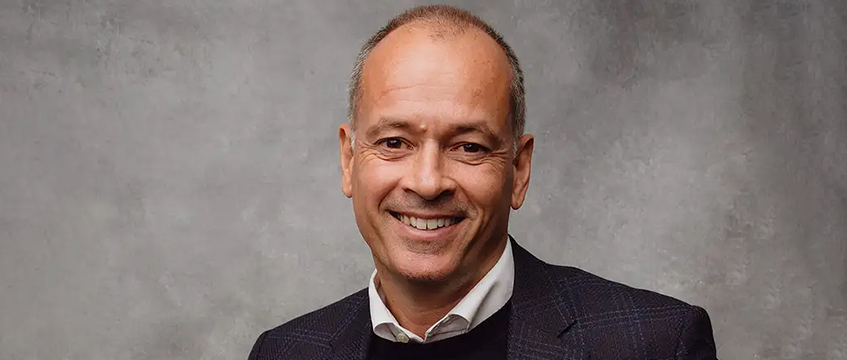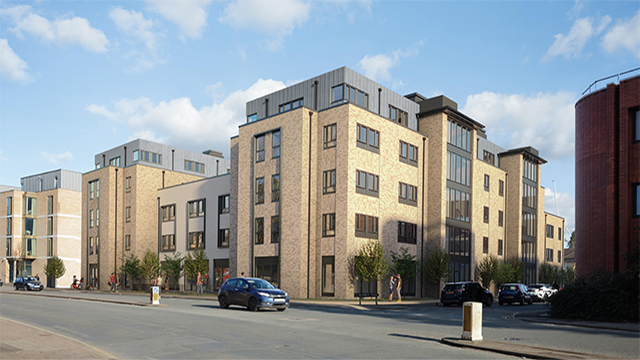Q&A: Milligan’s Stuart Harris on strategy and the challenges ahead
It has been a busy time for Stuart Harris, who was named chief executive of London-based developer Milligan earlier this week and a new member of Revo’s operating board last month.
At Milligan he takes the reins from John Milligan, who founded the business 21 years ago and will now become executive chairman. In a core leadership team with Milligan and chief investment officer Mike Anderson, Harris will seek to expand the business with more strategic partnerships as well as projects across the UK and Europe.
Existing projects and mandates include a strategic role with the John Lewis Partnership on its £500m build-to-rent pipeline; a partnership with Urban Splash and Swansea City Council to create a new commercial core for the city centre; and the development of a gateway hub to the Peak District National Park.
It has been a busy time for Stuart Harris, who was named chief executive of London-based developer Milligan earlier this week and a new member of Revo’s operating board last month.
At Milligan he takes the reins from John Milligan, who founded the business 21 years ago and will now become executive chairman. In a core leadership team with Milligan and chief investment officer Mike Anderson, Harris will seek to expand the business with more strategic partnerships as well as projects across the UK and Europe.
Existing projects and mandates include a strategic role with the John Lewis Partnership on its £500m build-to-rent pipeline; a partnership with Urban Splash and Swansea City Council to create a new commercial core for the city centre; and the development of a gateway hub to the Peak District National Park.
EG caught up with Harris at the annual MAPIC conference in Cannes to discuss his new role and how he plans to steer the business through the years ahead.
What’s the first thing on your to-do list as chief executive of Milligan?
In the past two or three years, going through pandemic, like a lot of businesses we have had a lot of time to think about what the future looks like from a regeneration perspective and the opportunities around repurposing shopping centres and town centres.
We have taken time to think about the types of projects that we want to work on, the people that we want to work with. There will always be an area focusing on strategic partnerships, which could be with local authorities or other developers.
We are keen to move our projects on – with the local authority schemes we are involved with and Peak Gateway, among others – and also to identify other partners to work with. It is about growing the business.
It’s not as if I’m coming in new. We have been working on those plans for years. It’s really about using those to accelerate the growth of the company over the next couple of years. Mike [Anderson], John, myself and others within the team are ambitious in terms of what we want to do.
There has been a natural progression within the business. It’s not as if John has stepped away – he’s still there. And we have an ambition to bring on the next generation. We are now looking at growing a team that can take over from us in 10 to 20 years’ time. It’s another area that we feel passionate about – getting the people into the business that reflects society today.
What is your strategy and vision for the business?
We want to be seen as a good and trusting partner for a whole range of property owners – all different types of a property, in a town or city centre – who can come to us and explain what their challenges are. We listen to those challenges and find the solutions. Alignment with whoever our partners are, and what they’re trying to do, is absolutely key.
We are in a time where there is an opportunity with a new generation of change. We are excited about that, and the challenge of ensuring that places offer the right balance of uses. When it comes to offices provision of a town centre, for example, we are looking at what workspace is required, as opposed to the traditional angle of how to attract big office occupiers for grade A space.
Alignment with whoever our partners are, and what they’re trying to do, is absolutely key
Then there’s retail and leisure, which has always been our passion. How much of that retail and leisure is sustainable in that town or city centre? You can’t control it all. It’s about using that as a starting point to understand the fabric of that place and then understanding the barriers are to making those changes. There are also questions around green space and the cultural offer – there is a plethora of issues.
Our point of difference is that we have always come up with bespoke solutions. Part of that is ideas, and another really important part is collaboration with stakeholders – not just councils, but people living and working in those towns and cities. Once you actually engage in that process early, I have always found you get a huge amount out of it.
What are the challenges? How much does the partnerships model rely on levelling up funding, for instance?
We have got partnerships with other private companies as well, but where we are looking at solutions to town centre regen, levelling up plays a really important part. On each of the projects, we are looking at what we can do if we get it [funding] and what it means if we don’t. There are plan Bs, but it may not accelerate change quite as quickly as it might have done with the levelling up money.
Everybody is waiting on levelling up – in all honesty, it’s really important. Over the past couple of years it has been beneficial – it has been the biggest and most meaningful pot, whereas some of the previous grants felt like they were having minimal impact. It sounds like the government is going to continue with it, albeit being oversubscribed. I understand the challenge of it – they work out the projects that [not only] have the best chance of making a difference, but going ahead. There is a hell of a lot for those teams to work through.
One of the biggest challenges is the government’s approach to decarbonising buildings. When you are looking at some form of regen or redevelopment, there is a cost to building sustainably, and I do wonder whether that needs some form of grant support to make sure we are accelerating the development of truly sustainable buildings rather than those developments being compromised or not being done at all, because of costs being prohibitive.
I just hope that despite what’s happening in the economy, it is recognised that in several cases innovation, and the right ways to build and develop, can only be achieved with support. Otherwise what will happen is that we will unfortunately end up not having the buildings that we are all aspiring for.
From a macro perspective, you have seen some rocky times in the market during your career. What are your tips for industry players in a recession?
You have got to have a really clear vision of where you want to get to. If it’s founded in core principles, if you’ve researched it properly and made sure you have the right partners, you have got to trust in the process and stay with it. But you have got to be adaptable.
You have got to ensure the designs of schemes can flex in terms of phasing and timing and delivery, as well as flex to respond to market opportunity where actually something that wasn’t particularly popular before is in vogue with the market and you can capitalise on that. A good example of that is retail – a lot of investors see retail as rather toxic. But retail and leisure form a really core part – it might form 10-15% of a wider mixed-use development, so it has to be looked at holistically.
We have had so many years with negatives and failures – it feels now like we are somewhere near the bottom of that. There inevitably will be a few failures at the start of next year, maybe one or two CVAs, but not on the same level we have seen before. What that has enabled now is clear space for different uses to come back, such as independents who reflect the communities they are in, that couldn’t previously afford to be in town or city centres.
When you look back at your time as chief executive of Milligan in another 21 years’ time, what would you like to be remembered for?
I have a huge amount of respect for John and what he has created. If I could look back and see that we have grown the business, one that has evolved and is reflective of the world around us, and we are building innovative projects and delivering regeneration, and somebody goes, “Well, I couldn’t see that line in the sand when Stuart took over from John”, where we have continued our growth pattern – for me, that would be the best result we could get. There would also be a lot of satisfaction in seeing new young professionals that we have brought into the industry go on to grow their careers.
To send feedback, e-mail pui-guan.man@eg.co.uk or tweet @PuiGuanM or @EGPropertyNews
Image: Milligan











